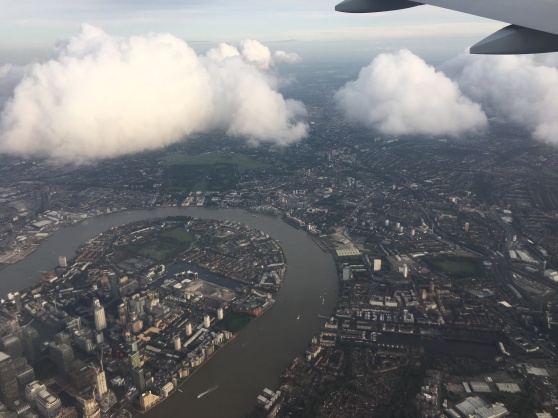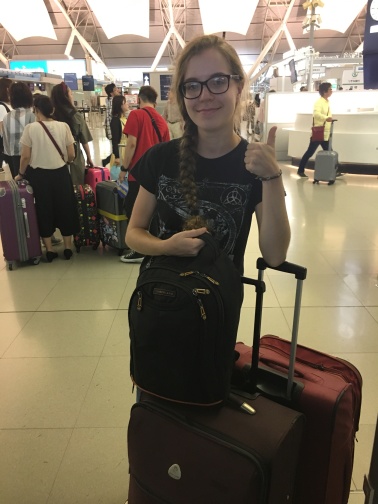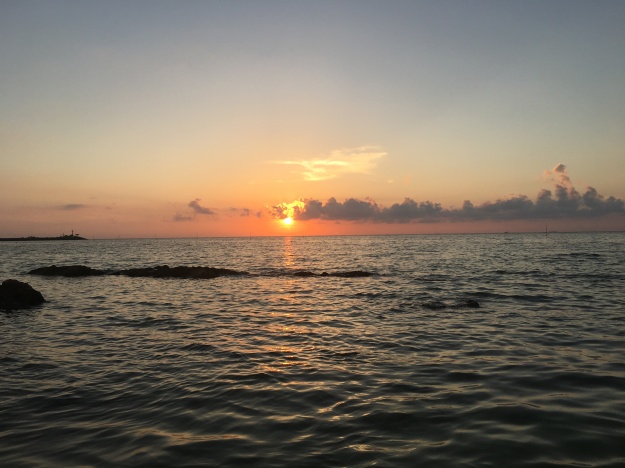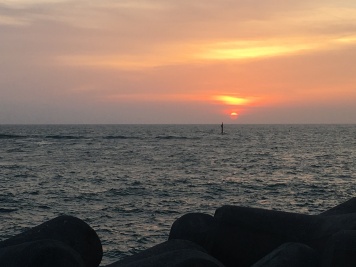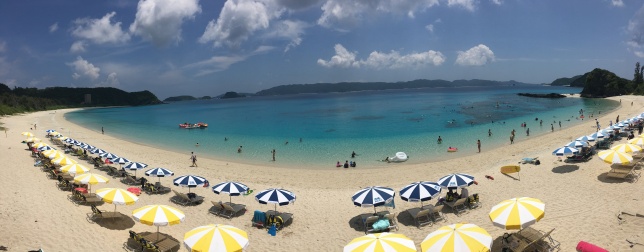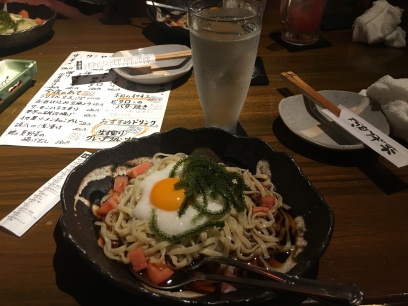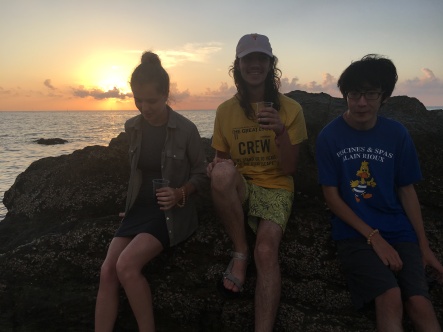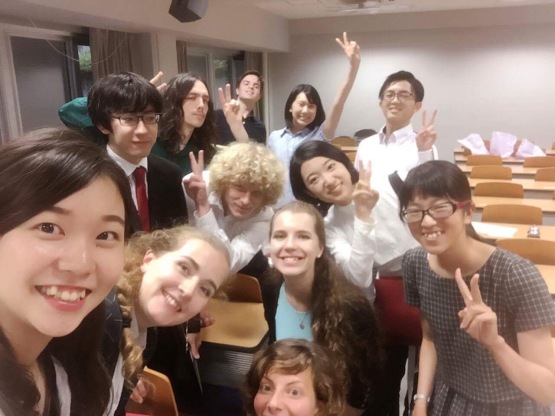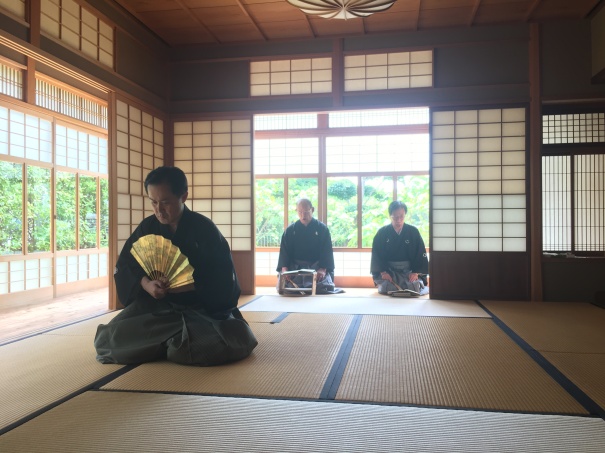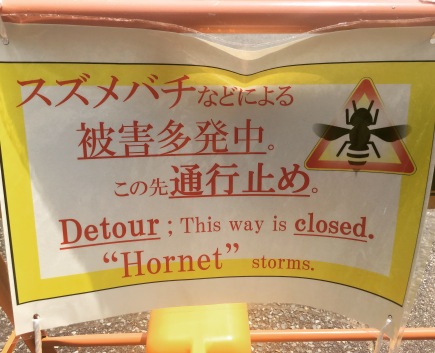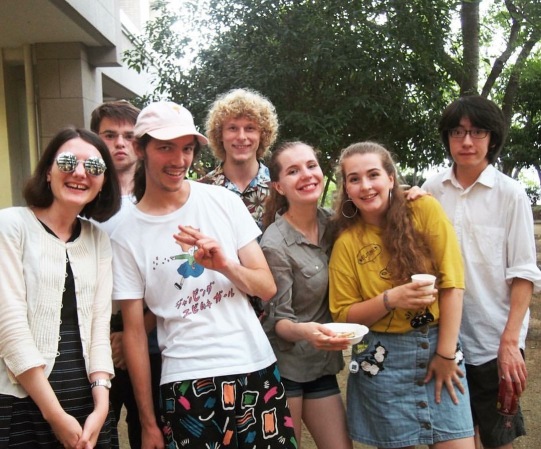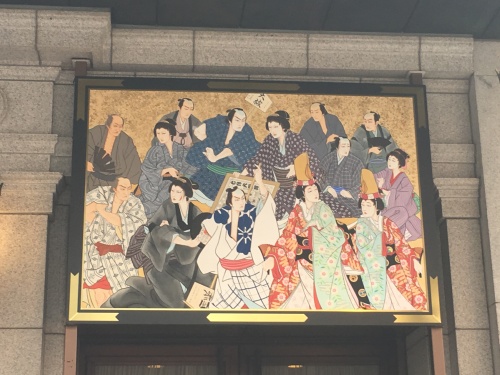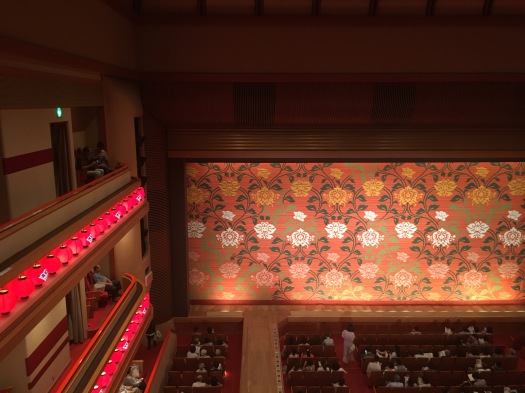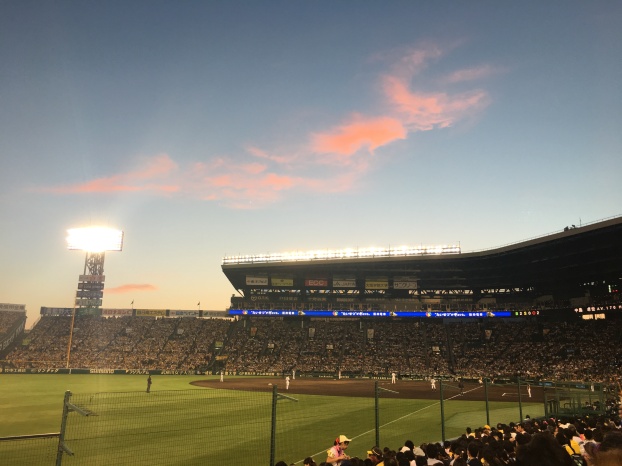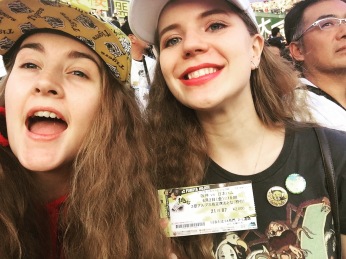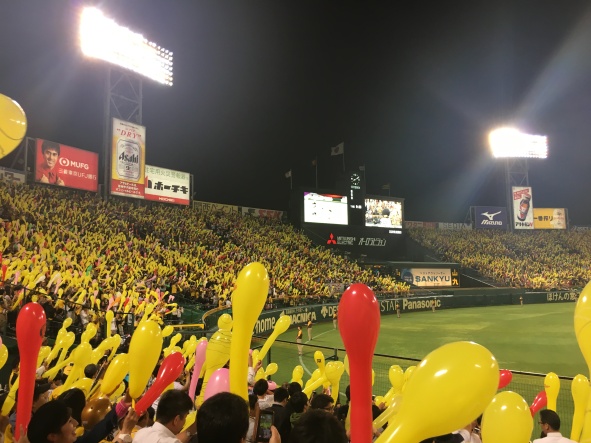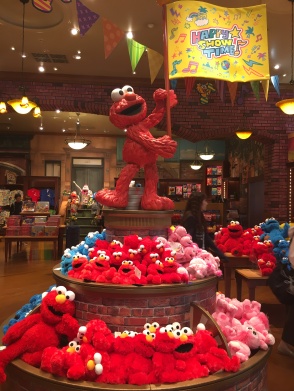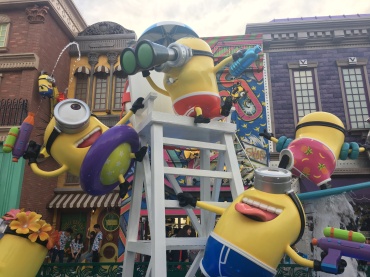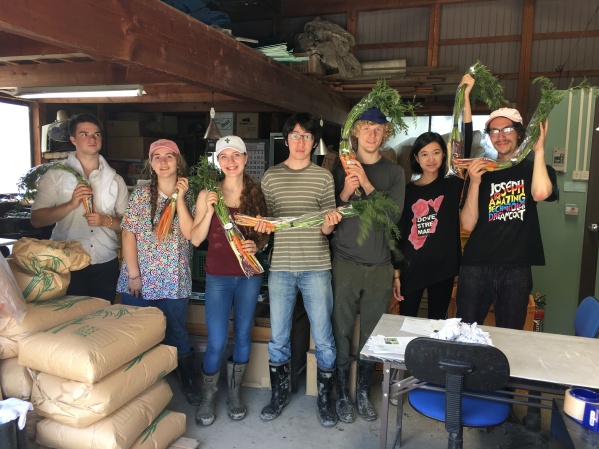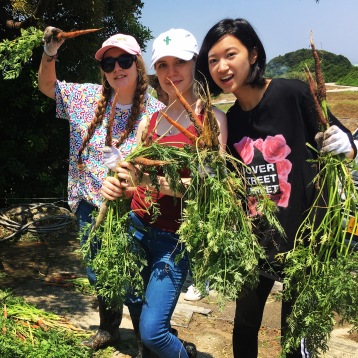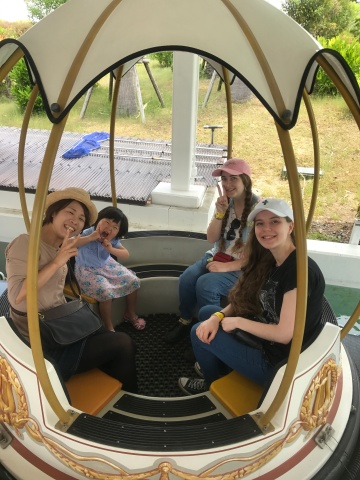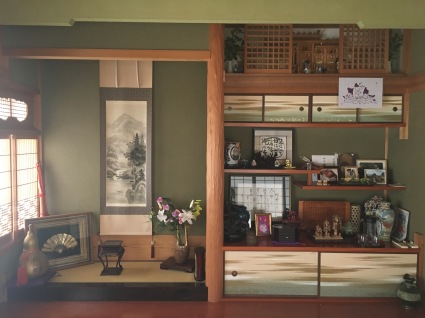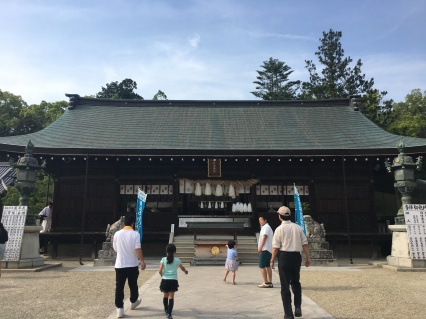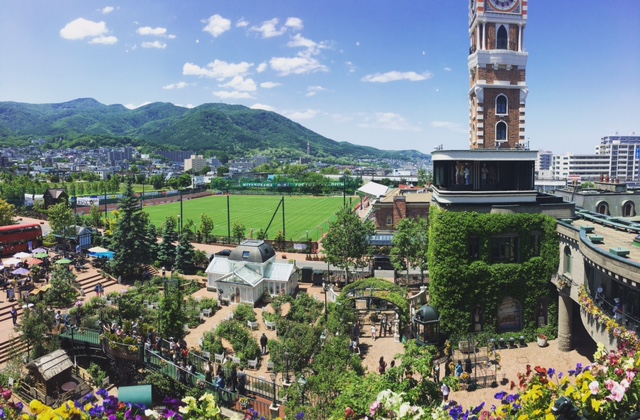
View from the chocolate factory
I was kind of anxious about disappearing off on a trip mid-semester to go to Sapporo. I went for 5 days, and 3 of those were class days, so it felt a bit bad.
It was awesome though, and I did get noticeably happier and more energetic when I got home.
I flew to Sapporo with Jet Star, which was comfortable and cheaper than Peach. It took 2 hours to get there from Osaka. The whole first day was basically taken up by getting to the town and then to my AirBnb.
This time I ended up staying with a really lovely office lady in her late twenties, who lives alone in central Sapporo in a one-bedroom flat. She was adorable and very helpful. Futchi (that’s her name) is one of those people who are able to get up at 5 am and be energetic even in the evening, which is something I’ve always wanted to be able to do. Futchi sleeps on the sofa even when guests are not around, and she was hardly ever home because she was working or hanging out with friends. We had a funny thing going where I would leave the house by 11 am while Futchi was still sleeping soundly, and I’d be out until early evening and go to bed by midnight, before Futchi got home. We did also have some nice chats though. She was maybe my favourite AirBnb host I’ve had so far.
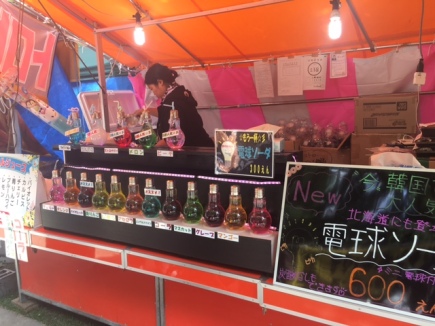
Juice in light bulb-shaped bottles
I had 3 full days to explore Sapporo, and I packed in a lot of sightseeing. I started the first day by going to the Hokkaido Shrine Festival that was going on, which was spread out around the town. One of the central parks had a large area covered in food stalls and ghost houses and a motorcycle trick arena. After having a look at that I headed over to see the shrine that organises the festival, which was beautiful and quite different in style from the ones I see in Kansai. At this point I was hungry and looked up vegan restaurants in the area. I was really impressed with how many there were. The one I had lunch in is called Itadakizen, and it turns out it has a chain in Tokyo and London, which I’m excited to visit. Vegan cafes are not that rare in Japan, but most of them serve Western food, so I was happy to eat traditional Japanese food without worrying about animal products.
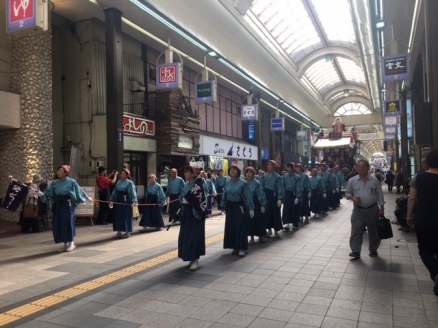
One of the processions
After getting lunch I headed to the town centre. As I got out of the metro station near the main shopping street, I stumbled upon several festival processions with lots of music and chanting going on. People were taking beautiful palanquins all around the place, and there were large crowds despite it being a weekday. Oh, and the weather was better than it was in Kansai: just warm enough to be comfortable in a t-shirt, and not humid. Being back in Kobe now I do really miss the Sapporo weather.
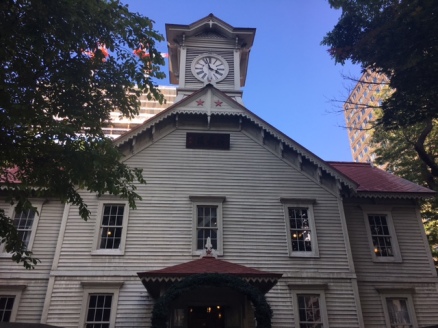
The clock tower
There is a lot to see around the city centre. It’s picturesque and full of parks, which distract you from the blocky concrete buildings that look like they’re stuck in the 80’s. Hokkaido is very proud of its history, which is wonderful as it had a culture very different from Japan’s before it was invaded. However, Sapporo was not really a town until the 1870’s, when it was artificially designed and populated. There is a lot of American influence to be seen around the city, and Sapporo does not shy away from that. One of the main sightseeing spots is a clock tower that looks like it came straight out of the American West. There are maps and photographs available of how Sapporo looked like just after its conception. I also saw the former government office building, which again looked rather American, and had many historical artefacts on display. I was interested to see that the exhibitions there focus on different topics from Osaka or Tokyo museums: it’s all about ancient Hokkaido culture, its invasion, and its relations with both Japan and Russia. I ended the first day by going on a ferris wheel on top of a shopping centre, and getting a great view of the city in the setting sun.
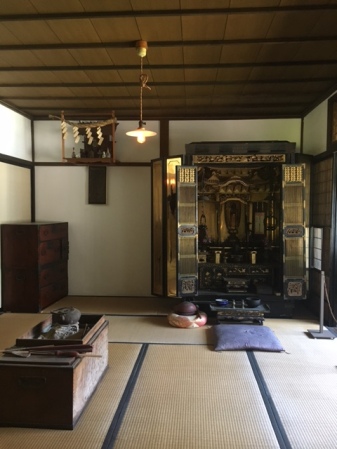
A tatami room
On the next day I headed straight to the Historical Village of Hokkaido, which had one of the most unusual ways of preserving history that I’ve seen. Old buildings from around Sapporo have been moved to this village on the outskirts of Sapporo, and it is organised in such a way that you do really feel like you’ve stepped into the late 19th century. You can go inside all of the buildings; and as well as government offices or shops there are also private houses filled with real people’s belongings, the way they used to be arranged. I loved the Japanese-style rooms the most. I must have spent 3 or 4 hours there, just wondering around, chatting to the staff and imagining what life must have been like. The village is situated near a large natural park, and I enjoyed walking through it to the Hokkaido Museum which was also nearby.
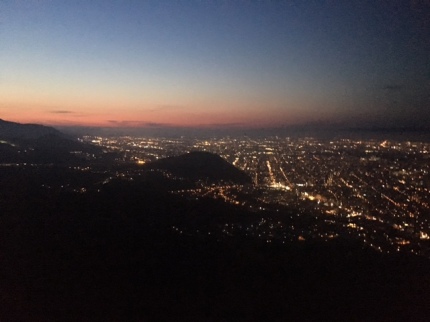
When I got back to the city centre I stopped at another vegan cafe, which also served Japanese food. The whole holiday was a culinary paradise, really. The staff in all of the cafes were also really friendly and chatty, eager to compare Kobe and Sapporo. After getting dinner I headed towards the ropeway to Mount Moiwa – the best observational spot around. As usual, it was very expensive to go up, and I didn’t have enough cash to go all the way to the top, but even just halfway up the mountain the view was breathtaking.
My last day in Sapporo was just as busy as the rest. The first thing on my list was… a chocolate factory! Hokkaido is famous for the Shiroi Koibito biscuits that are produced there, and the factory in Sapporo was turned into a small theme park. It was mostly kid-oriented with lots of colourful interactive activities, but also had some interesting information on how the chocolate is made. I passed on making my own biscuits, but could not resist having cake at the cafe with an amazing view of the city. Bringing omiyage (souvenirs) back from a trip is a common practice in Japan so I made sure to get some biscuits for my friends and teachers.
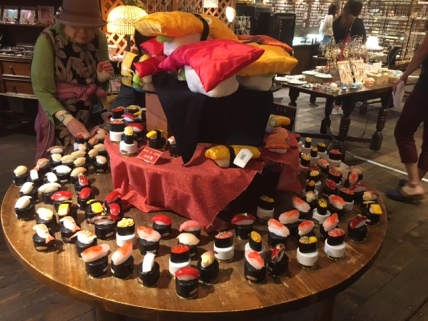
The sushi music boxes
Then I went to a bus stop, and… got on the bus in the opposite direction of where I intended to go. The next thing I knew I was on an expressway with no stops between Sapporo and the next nearby town – a port town called Otaru. After some frantic googling I just shrugged and settled in for the ride. This kind of thing actually happens to me a lot, since I’m rather absent-minded. Otaru is recommended for visiting anyway, and it was rather cute. I visited its Music Box Museum, which was overwhelmingly adorable, shiny, and expensive, and a couple of other shops. The funniest thing I’ve seen was definitely the sushi-shaped music boxes with Ghibli theme tunes. Then I just headed back to the hour-long bus journey to Sapporo.
I managed to get back in time to explore the Hokkaido University campus. It’s the 6th best university in Japan and generally a beautiful area. I enjoyed visiting its little museum that showcases the university’s research. After that I ended the day by going to yet another vegan cafe in Sapporo, and chatting to Futchi.
Aaand back to reality. The backlog of things to catch up on has been tough, but the trip was totally worth it. Definitely gave me a perspective on academic and health matters. Now only 7 weeks of uni to go!
